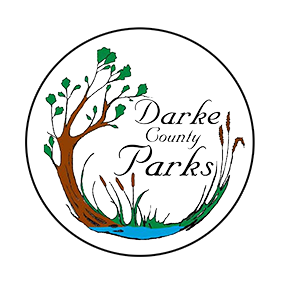Cristy Parker, Naturalist Educator
Even though I am not a scientist, I love to explore new awareness that comes from wildlife. What I have noticed is the way wild animals, plants, and other organisms adapt to their environment. Wild creatures don't ask their environment to change for their personal needs, they adapt and go with the flow of nature. I believe this kind of adaptation to be a state of self-mastery. Self-sustaining within a system is preferable to trying to master and control it. For example, a plant that can regenerate through self-seeding is aware of the weather conditions and records weather relationships in its transgenerational memory. I perceive the plants' weather relationships as records of resilience for the next generational seed, instilling knowledge of how to adapt to droughts and floods. However, humans are unique in that their adaptation can either cause droughts and floods or sustain a living system.
Humans also adapt to their environment and record relationships in our transgenerational memory. However, the fact that we can adapt to two distinct systems complicates our observation of the human world. Are we aware of our adapting or non-adapting environments? Most of us are unaware of the first system we were born into, the living system that encompasses our body, our unique nature, and the living system that surrounds us. However, we may also be unaware of the system of man's beliefs—a system outside of our nature that conditioned us to think and behave separately from the living system (think nurture vs nature). I am coming to understand that people adjust to their surroundings without fully understanding how their beliefs impact the surrounding living system, and most of us have never learned about the intricate nature of this system.
I will present two examples of how humans have adapted to their environment, showcasing both destructive and self-sustaining relationships. One example comes from an interview with Kevin Hart, and the other is an article about people involved in the Chipko Movement. First, we will start with Terry Gross interviewing Kevin Hart on NPR's Fresh Air in 2019.
Kevin Hart's podcast, "Kevin Hart Says Comedy's Full Of 'Flawed But Funny' People, Himself Included," was available at https://www.npr.org/transcripts/683598263. The interview revolved around Hart's homophobic tweets and jokes, during which he elaborated on his upbringing to Gross. Personally, the most significant insight I gained from the entire conversation was Hart's recognition of his claim to be a "product of his environment." He acknowledges that the adults in his life, their language, and their jokes conditioned him, declaring, "That's all I know." However, he also acknowledged that his travels introduced him to different people, experiences, and new cultures. His awareness expanded, as he said, “Because of that, you're able to adapt, and you're able to change and take undesirable habits away.”
The second example is the 1970s Chipko Movement. In 2019, “Vandana Shiva penned an article titled Vandana Shiva: “Everything I Need to Know I Learned in the Forest”, for Yes magazine,
https://www.yesmagazine.org/issue/nature/2019/05/03/vandana-shiva-seed-saving-forest-biodiversity. The Chipko Movement happened in the Garhwal Himalaya region, where widespread deforestation occurred. According to Shiva, this deforestation led to “landslides, floods, and a shortage of water, fodder, and fuel.” The women of the Chipko Movement, whom Shiva described as “peasant women,” declared that they would embrace the trees with their lives as a form of protection. When the foresters arrived, they asked the women to explain, and I quote from the article, "We have come to teach you forestry.” He retorted, “You foolish women, how can you prevent tree felling by those who know the value of the forest? Do you know what forests bear? They produce profit and resin and timber.” The women sang back in chorus, What do the forests bear? Soil, water, and pure air. Soil, water, and pure air Sustain the earth and all she bears.”
The way that I view both examples is that if Hart, the foresters, and I had adapted, like the plant, in an act of resilience to the relationships within the living system, the conflict of tweeting offensive words would not have arisen. A tree's life would hold greater value than death, and I wouldn't find myself self-reflecting on how some of my actions haven't benefited all life. However, our upbringing and conditioning have instilled in us a sense of separation from our living systems. Nevertheless, Kevin Hart, just like myself, is gradually gaining awareness. With this awareness, we can choose to change our behavior and begin to act as a self-master; we take responsibility for our actions and forgive. Forgiveness and taking responsibility for oneself is certainly self-mastery—a process of self-sustainability within a system rather than an attempt to master and control the system.
From my observations, I can no longer assume that plants lack intelligence. Instead, they are self-masters who teach me how to adapt myself to care for life itself, much like the peasant women of the forest.

